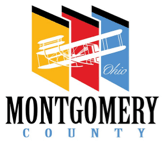Ohio County Engineers Since 1803
Ohio was admitted to the Union in 1803—and one of the original offices created by the first General Assembly was that of county surveyor, from which the county engineer’s office has evolved. When a new county was created, the Legislature appointed a court of common pleas, which fixed the time and place for a county-wide election. At first, only three offices were filled by these elections: commissioners (3), sheriff, and coroner. The court appointed the county surveyor, recorder, prosecuting attorney, and clerk. In those early days of the state, the office of county surveyor was a very important position. As early as 1785, Ohio had been the laboratory in which the Public Lands rectangular survey system was developed; and well into the 1800s the clarification of land titles and boundaries was the major function of the county surveyor. After 1820, however, the state became increasingly caught up in the “internal improvements” movement. Some of the county surveyors were involved with building Ohio’s network of canals, and virtually all were called upon to spend more and more time developing the state’s integrated system of good roads.
The increasing responsibilities of the position moved the Legislature, in 1831, to make the office of county surveyor elective, for a term of three years “if he so long behave well and until his successor be elected and qualified.”
By late in the 19th Century the county surveyor was almost totally involved with building and maintaining roads, bridges, and drainage ditches but he still received no salary, being paid an average of $5.00 per day only on those days when actually employed. Legislation in 1915 established a salary and the responsibility of also being resident engineer for the State Highway Department.
The year 1928 saw the county engineer emerging as the public official you know today. In that year the engineer was elected to a four (4) year term which started on “the first Monday in January next after his election.” Then on August 30, 1935, the title of the office was changed to “County Engineer.”
Only persons who hold registration certificates of the State of Ohio as both “Registered Professional Engineer” and “Registered Surveyor” may qualify for the office of County Engineer. The elected County Engineer “shall perform for the county all duties authorized or declared by law to be done by a civil engineer or surveyor.” Although specifically exempt from engineering responsibilities on public buildings, he is the engineer for all public improvements under the authority of the board of commissioners within and for the county.
There are four distinct highway systems in Ohio: the Ohio Department of Transportation is responsible for the 19,000-mile State Highway System; the County is responsible for the 30,000-mile County Highway System; the Township Trustees administer the 39,000-mile Township Highway System; and the various municipalities are responsible for the streets (approximately 21,000 miles) and alleys within their boundaries.
The County Engineer works with the County Commissioners and the Township Trustees to perform his various responsibilities in the following areas:
All maintenance, repair, widening, resurfacing, reconstruction, and construction of pavements and bridges on the county highway system is the County Engineer’s responsibility. This includes traffic control, safety, mowing, and snow removal.
The County Engineer is the engineering advisor to the Township Trustees for the maintenance, repair, widening, resurfacing, and reconstruction of their highways. The bridges on the Township Highway system are the full responsibility of the county.
The county is responsible for many bridges within municipalities, including some on the State Highway System.
The responsibility of the County Engineer for bridges as mentioned above includes the annual inspection and evaluation of the condition and load-carrying capacity of each bridge. The statutes require a uniform method of procedure and record keeping.
The County Engineer serves on County and Regional Planning Commissions and is the engineer for each Board of Township Trustees in his county. He is the Tax Map Draftsman for the County.
In the unincorporated areas the citizen of Ohio might find his County Engineer involved with County airports, sidewalks, weed control along roads and ditches, and the establishment and maintenance of assessed ditches.
In many counties, the engineer has been appointed to serve as County Sanitary Engineer. He works with the County Commissioners to supervise the construction of sewer and water lines in the unincorporated areas. The approval, regulation and operation of sanitary land fills and incinerators may also be his department’s responsibility.


